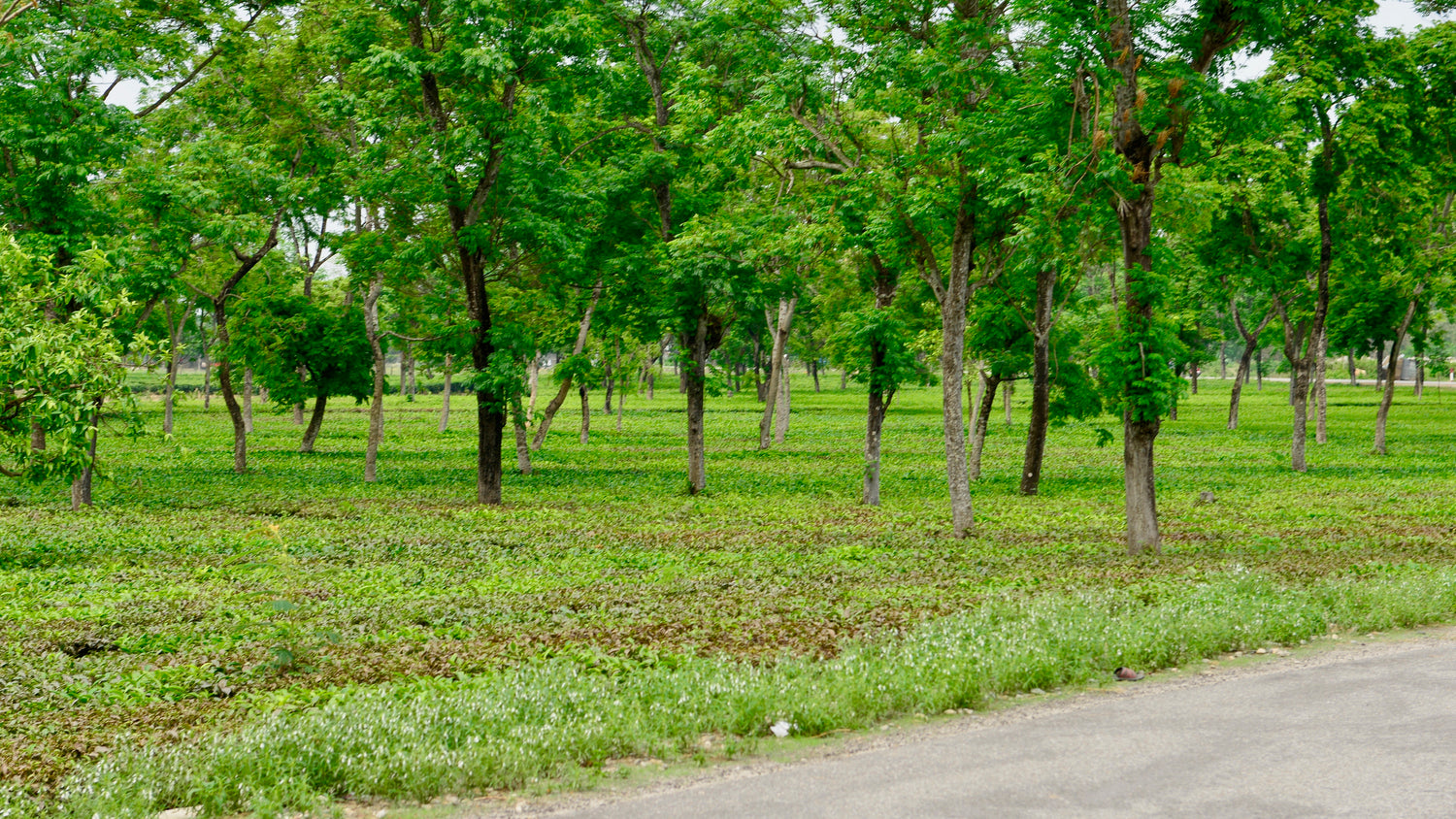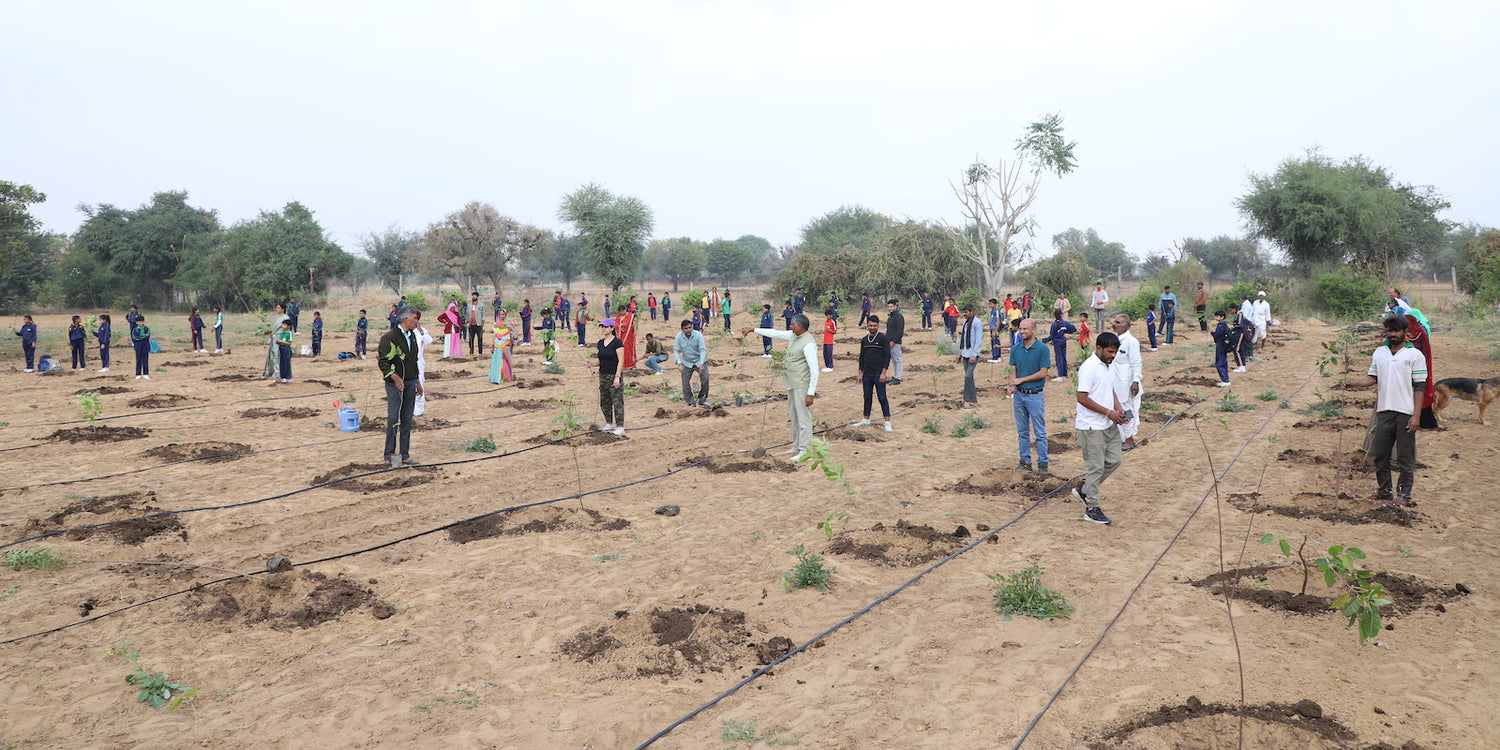Agroforestry in Bihar: A Growing Trend in Sustainable Agriculture
Bihar, with its fertile Gangetic plains and rich agricultural heritage, is one of India’s most productive states. However, the challenges of declining Read more
Connect with us
-
👥 Corporates
If you are looking for:
- 🌲 Tree Plantation Events
- 📊 CSR Projects
📧 corporate@growbilliontrees.com
📞 +91 9699723523
💬 +91 9325931304 WhatsApp (Only)
🕒 Mon - Sat | 10am - 7pm IST
-
🧩 Tree Plantation NGOs
If you are looking for:
- 💰 Financial Assistance
- 🤝 Operational Support
📧 support@growbilliontrees.com
📞 +91 9699723523
💬 +91 9325931304 WhatsApp (Only)
🕒 Mon - Sat | 10am - 7pm IST
-
🌼 Individuals
If you are looking for:
- 👥 Group Tree Plantation Drive
- 🌳 Bulk Tree Plantation
📞 +91 9699723523
💬 +91 9325931304 WhatsApp (Only)
🕒 Mon - Sat | 10am - 7pm IST
Trending
Trees for Corporates
Agroforestry in Bihar: A Growing Trend in Sustainable Agriculture
Bihar, with its fertile Gangetic plains and rich agricultural heritage, is one of India’s most productive states. However, the challenges of declining soil fertility, climate change, and rural poverty necessitate innovative approaches to farming.
Agroforestry, a practice that integrates trees, crops, and livestock, is emerging as a sustainable solution.
This article explores the historical roots, scientific benefits, environmental impact, and future potential of agroforestry in Bihar while highlighting how Grow Billion Trees is transforming the state’s agricultural landscape.
Historical Context of Agroforestry in Bihar
Agroforestry has deep cultural and traditional roots in Bihar.
Farmers historically planted trees like Banyan (Ficus benghalensis), Neem (Azadirachta indica), and Peepal (Ficus religiosa) alongside crops for shade, fodder, and religious purposes.
Agri-horti systems, where fruit trees like Mango and Litchi were intercropped with grains, were common in villages.
Bihar’s ancient texts and folklore often referenced the importance of trees in agricultural ecosystems.
However, the Green Revolution shifted focus to monoculture cropping, leading to a decline in agroforestry. Today, efforts are underway to revive this sustainable practice, aligning with modern agricultural needs and environmental challenges.
The Need for Agroforestry in Bihar
1. Restoring Soil Fertility
Bihar’s fertile lands are depleting due to intensive farming and overuse of chemical fertilizers. Agroforestry systems improve soil health by adding organic matter and supporting nutrient recycling.
2. Tackling Climate Change
Bihar faces recurrent floods, droughts, and rising temperatures. Agroforestry reduces vulnerability to climate extremes by creating microclimates and stabilizing soil.
3. Diversifying Farmer Incomes
With small landholdings, Bihar’s farmers benefit from diversified income sources such as timber, fruits, and non-timber products like honey and medicinal plants.
4. Improving Food Security
Agroforestry increases agricultural productivity by integrating food crops with fruit and timber trees, ensuring year-round availability of diverse produce.
5. Enhancing Biodiversity
Agroforestry systems create habitats for pollinators, birds, and small mammals, boosting biodiversity in Bihar’s farmlands.
Scientific Benefits of Agroforestry
- Soil Health Improvement: Trees like Neem and Mango improve soil organic matter, enhancing fertility and crop yields by 20–30%.
- Carbon Sequestration: Agroforestry systems in Bihar sequester up to 25 tons of carbon dioxide per hectare annually, mitigating climate change impacts.
- Water Conservation: Tree roots enhance groundwater recharge and reduce surface runoff, ensuring better water availability for crops.
Common Agroforestry Practices in Bihar
1. Boundary Plantations
Farmers plant trees like Sheesham and Bamboo along field edges, providing windbreaks, timber, and fodder while preventing soil erosion.
2. Horti-Silviculture
Fruit trees like Mango, Litchi, and Guava are integrated with timber species, creating a sustainable and profitable system.
3. Agri-Silviculture
Crops like Wheat, Paddy, and Maize are grown alongside trees like Neem, improving soil fertility and overall productivity.
4. Silvo-Pastoral Systems
Combining trees and grasses, this system supports livestock by providing shade and fodder while conserving soil in flood-prone regions like Kosi.
Fun Facts About Agroforestry in Bihar
- Mango Love: Bihar is one of India’s top producers of mangoes, and agroforestry systems amplify its cultivation and profitability.
- Litchi Legacy: The state’s Muzaffarpur region is famous for litchi, which thrives in agroforestry systems, adding economic value for farmers.
- Bamboo Boost: Known as “green gold,” bamboo is a favorite in Bihar’s agroforestry for its fast growth and versatile uses.
Environmental Impact of Agroforestry in Bihar
1. Preventing Soil Erosion
Agroforestry reduces soil erosion in flood-prone areas like Champaran and Kosi, stabilizing agricultural lands and protecting crops.
2. Improving Air Quality
Trees in agroforestry systems act as natural air purifiers, mitigating pollution from agricultural residues and industrial activities.
3. Flood Mitigation
Tree roots enhance water infiltration, reducing the severity of floods in Bihar’s low-lying regions.
4. Enhancing Biodiversity
Agroforestry systems create mini-forests that support native flora and fauna, enriching the ecological fabric of Bihar’s agricultural landscapes.
Challenges in Agroforestry Adoption
-
Small Landholdings Fragmented farmlands in Bihar limit large-scale agroforestry implementation, necessitating tailored approaches.
-
Lack of Awareness Many farmers are unaware of agroforestry’s long-term benefits, leading to low adoption rates.
-
Market Access Limited access to markets for timber and non-timber products affects profitability.
-
Climate Risks Frequent floods and unpredictable weather pose challenges to maintaining agroforestry systems.
Grow Billion Trees: Leading the Agroforestry Movement in Bihar
Grow Billion Trees is at the forefront of transforming Bihar’s agricultural landscape through innovative agroforestry projects. The organization’s efforts focus on restoring ecosystems, empowering farmers, and addressing environmental challenges.
Collaborations
- Partnering with local communities, NGOs, and the Bihar Forest Department to promote agroforestry practices.
- Collaborating with agricultural research institutions to develop region-specific models.
Execution Strategies
- Tree Nurseries: Establishing nurseries to supply saplings of species like Neem, Mango, and Bamboo to farmers at subsidized rates.
- Farmer Training Programs: Conducting workshops and field demonstrations to educate farmers on agroforestry techniques and benefits.
- Market Linkages: Connecting farmers with markets for timber, fruits, and non-timber products, ensuring fair prices and steady demand.
Awareness and Advocacy
- Running community campaigns to highlight agroforestry’s role in climate resilience and rural development.
- Sharing success stories of farmers who have benefited from adopting agroforestry practices.
Key Achievements by Grow Billion Trees
- Tree Plantation Drives: Over 6 million trees planted across Bihar, increasing green cover and restoring degraded lands.
- Farmer Empowerment: Enabled over 12,000 farmers to adopt agroforestry, improving their incomes by up to 40%.
- Carbon Sequestration: Agroforestry projects under Grow Billion Trees in Bihar have sequestered over 500,000 tons of carbon dioxide.
Future Prospects
By 2030, agroforestry in Bihar has the potential to:
- Increase the state’s green cover by 20%, contributing to India’s climate goals.
- Restore over 500,000 hectares of degraded land, enhancing agricultural productivity.
- Provide additional income to over 30,000 farming households, ensuring economic stability and resilience.
Conclusion
Agroforestry in Bihar is a beacon of hope for sustainable agriculture, offering solutions to challenges like land degradation, climate change, and rural poverty.
By integrating trees with crops and livestock, this practice enhances biodiversity, diversifies incomes, and restores ecological balance.
Grow Billion Trees is playing a pivotal role in promoting agroforestry, empowering farmers, and building a greener future for Bihar. With collective efforts, agroforestry can transform Bihar’s agricultural landscape, ensuring prosperity and sustainability for generations to come.
Mango Agroforestry in Bihar
Mango trees thrive in Bihar’s fertile plains, providing sweet profits and pairing beautifully with crops in sustainable agroforestry systems.
Litchi-Based Agroforestry
Litchi, Bihar’s pride, brings juicy returns to farmers, thriving alongside timber species and adding economic value to agroforestry systems.
Bamboo Agroforestry in Bihar
Bamboo, the “green gold,” offers rapid growth and versatile uses, making it a star player in Bihar’s agroforestry landscape.
Neem in Agroforestry
Neem trees enhance soil health, repel pests, and offer medicinal value, cementing their place in Bihar’s agroforestry toolkit.
Boundary Plantations in Bihar
Trees like Sheesham and Bamboo along field edges act as windbreaks, natural fences, and income generators for Bihar’s farmers.
Silvo-Pastoral Systems in Bihar
Blending trees and grasses, these systems provide fodder for livestock while stabilizing soil in flood-prone regions of Bihar.
Agroforestry for Soil Fertility in Bihar
Tree roots restore soil health, ensuring fertile farmlands and productive crops for Bihar’s agriculture.
Carbon Sequestration in Bihar Agroforestry
Agroforestry systems capture carbon dioxide, transforming Bihar’s fields into climate warriors against global warming.
Grow Billion Trees in Bihar Agroforestry
Providing saplings, training, and market access, Grow Billion Trees makes agroforestry a win-win for Bihar’s farmers and environment.
Horti-Silviculture in Bihar
Fruit trees like Guava and Mango team up with timber species, creating a deliciously sustainable agroforestry model in Bihar.
Agroforestry for Flood Mitigation in Bihar
Tree roots enhance water infiltration and stabilize soil, reducing flood risks in Bihar’s vulnerable lowlands.
Biodiversity in Bihar Agroforestry
Agroforestry systems create habitats for birds, pollinators, and native wildlife, turning Bihar’s farms into vibrant ecosystems.
You may like
Corporate Plantations
FAQ
What is agroforestry in Bihar?
Agroforestry combines trees, crops, and livestock to boost farmer incomes and restore ecosystems. Grow Billion Trees promotes this practice to transform Bihar’s agricultural landscapes sustainably.
Why is agroforestry important in Bihar?
It restores soil fertility, mitigates floods, and diversifies farmer incomes. Grow Billion Trees ensures agroforestry benefits rural communities while addressing environmental challenges.
How does agroforestry combat soil degradation in Bihar?
Trees enrich soil with organic matter, reduce erosion, and improve fertility. Grow Billion Trees partners with farmers to implement agroforestry systems that rejuvenate the land.
Which trees are popular in Bihar’s agroforestry systems?
Mango, Litchi, and Bamboo are local favorites, offering fruits, timber, and rapid growth. Grow Billion Trees provides high-quality saplings for these species.
How does agroforestry mitigate flood risks in Bihar?
Tree roots stabilize soil, enhance water infiltration, and reduce surface runoff. Grow Billion Trees promotes agroforestry to protect flood-prone regions like the Kosi belt.
What is the role of Bamboo in Bihar’s agroforestry?
Bamboo grows quickly, supports livelihoods, and thrives in agroforestry systems, making it a valuable addition. Grow Billion Trees encourages its cultivation for sustainable farming.
How does agroforestry support biodiversity in Bihar?
Agroforestry farms act as mini-forests, creating habitats for pollinators, birds, and small mammals. Grow Billion Trees promotes designs that balance farming with biodiversity conservation.
Can agroforestry combat climate change in Bihar?
Yes, agroforestry sequesters carbon and reduces greenhouse gases, helping Bihar mitigate climate impacts. Grow Billion Trees scales up projects to amplify these climate benefits.
What is silvo-pastoral agroforestry in Bihar?
This system combines trees and grasses, providing fodder for livestock while improving soil stability. Grow Billion Trees promotes silvo-pastoral systems for sustainable livestock management.
What challenges do farmers face with agroforestry in Bihar?
Small landholdings and market access are common hurdles. Grow Billion Trees bridges these gaps by offering training, saplings, and market linkages.
How does Grow Billion Trees promote agroforestry in Bihar?
We plant trees, train farmers, and create market connections, ensuring agroforestry thrives as a sustainable farming model in Bihar.
Can small farmers adopt agroforestry in Bihar?
Absolutely! Small farmers benefit from diversified incomes and improved land use. Grow Billion Trees provides tools, training, and support to make agroforestry accessible for all.























